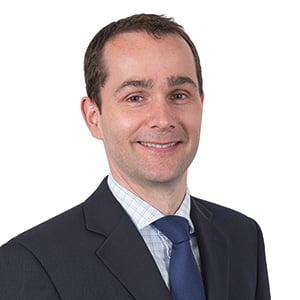Key takeaways
- Understand what a Bare Trust is and when it is used
- Understand the administration duties associated with a Bare Trust
- Understand the tax treatment of Bare Trusts
What is a Bare Trust?
A Bare Trust is the most frequently used example of a fixed trust. It is an arrangement whereby the Settlor allows assets to be held by a Trustee on behalf of a specified Beneficiary (or Beneficiaries). Those named beneficiaries have an absolute entitlement both to the assets in the trust and any income received by those assets. As a result, Bare Trusts are also known as ‘Absolute Trusts’. Once Beneficiaries of a Bare Trust are named, they cannot be changed or removed.
When is a Bare Trust used?
There are several reasons why the Settlor may choose a Bare Trust:
- The Settlor is certain of who they wish to benefit.
- The Settlor wants to make gifts to minors (below the age of 18, or 16 in Scotland) such as children or grandchildren.
- The Settlor wants to make gifts to adults who are not able or do not have the capacity to manage their own financial affairs (although adult beneficiaries have the right to demand trust assets).
- The Settlor wants to ensure a lifetime gift is a Potentially Exempt Transfer (PET) and therefore will not be subject to an immediate Inheritance Tax charge.
While the Trustee of the Bare Trust is responsible for the investment decisions, in some instances the Trust Deed allows the Beneficiary to direct decisions and votes.
When does a Beneficiary have the right to assets in a Bare Trust?
Under a Bare Trust, the assets are held in the name of the Trustee. Beneficiaries are legally entitled to demand their share of the trust’s assets at the age of majority, when they reach 18 in England or 16 in Scotland.
Once they reach adulthood, the Beneficiary is absolutely entitled to take control of the assets, regardless of the wishes of the Settlor. However, in situations where Trustees continue to hold assets beyond these ages, they must make the beneficiaries aware of their entitlement to assets within the Trust, as these will need to be known by the Beneficiary for tax purposes, or in other financial situations such as divorce or bankruptcy. A Bare Trust will not normally protect a beneficiary from creditors.
Unlike with a Junior ISA or Self-Invested Personal Pension (SIPP), there are no formal restrictions on withdrawals. In fact, withdrawals from a Bare Trust are permitted before the Beneficiary reaches the age of 18 provided written permission has been received by the Trustee that the withdrawal is for the benefit of the Beneficiary.
Should a Beneficiary of the Bare Trust die, the assets in the trust will pass to the Beneficiaries named in their own will, or should the Beneficiary die without a will, according to Intestacy rules. The assets do not pass automatically to any surviving Beneficiaries of the original Bare Trust, nor does the Settlor have any say over who the assets in the Bare Trust go to.
Potentially Exempt Transfers
The initial gift into a Bare Trust arrangement is a Potentially Exempt Transfer (PET) and provided the Settlor survives for at least seven years, there is no Inheritance Tax charge.
We cover PETs in more detail here.
Administration of the Bare Trust
After the Bare trust has been created, its Trustees will be required to deal with the administration of the assets within the trust, including dealing with the product providers of any investments or bonds.
Any income that arises from investments within the trust belong to the Beneficiary and should be paid to them, unless they are minors, in which case the income can be held within the trust until they reach the age of majority.
Trustees can, however, use the assets in the trust, and any income generated, for the benefit of the Beneficiary. In other words, the trust can be used to provide for the minor’s education, for example.
The Trust Registration Service
Unless specifically exempt, most trusts, including Bare Trusts, have to register with the UK Trust Registration Service (TRS). irrespective of whether there is a tax liability.
In 2017, the TRS came into effect with the aim of improving transparency around the Beneficial ownership of assets held in trust with UK tax liabilities.
The Fifth Money Laundering Directive regulations, which came into effect in October 2020, significantly extended the scope of the TRS, with limited exclusions, to cover all UK express trusts and certain non-UK trusts (whether taxable or not).
This Link on Gov.uk provides further guidance on the TRS.
Please also see this article:
Tax treatment of Bare Trusts
If the trust is set up by anyone other than the parent, the Beneficiary is considered for tax purposes as ‘holding’ the trust property in their own name. As a result, they are liable for any income Tax or Dividend income due on the trust’s assets.
In respect of capital gains tax this is always assessed on the beneficiary of the trust no matter who set the trust up.
Where a parent sets up the Bare trust, income and dividends over £100 is assessed on them and the parent is required to pay any tax liabilities due.
This is known as the ‘parental settlement’ rule. This rule does not apply to grandparents or other Trustees, which is why grandparents often use Bare Trusts for the grandchildren.
Beneficiaries can make use of personal allowances and rates (personal allowance, 0% starting rate band for savings, personal savings allowance and dividend allowance). They should account for any Income Tax or Capital Gains Tax relating to the trust on their Self-Assessment tax return as if it applied to them directly (not the SA107 Trusts supplementary pages).
Tax treatment of Investment Bonds
Investment bonds do not produce an income. As a result, there is no Income Tax charge to be paid on investment bonds within a Bare Trust, unless money is withdrawn from the bond wrapper and a chargeable event occurs. Investments within the bond wrapper can be reviewed and changed without the need for the Beneficiary (or the Trustee) to complete a Self-Assessment tax return.
This means parents will often use bonds as the investment within a Bare Trust for their children (as minor Beneficiaries) as Income Tax on the gift can be deferred until they reach 18 (at which point gains will be taxed on the Beneficiary of the trust. If a withdrawal is needed before the Beneficiary turns 18 – for example to pay school fees – then should the gain exceed £100 a year, the parental settlement rule applies and the whole gain will be taxable for the parent.
Capital Gains Tax treatment of Bare Trusts
Bare trusts are often created either by a transfer of cash to the Trustees or the transfer of existing assets, such as insurance bonds, share portfolio or other investment funds. There are no Capital Gains Tax liabilities for these lifetime gifts involving cash or existing bonds.
However, if other assets are transferred into trust while the Settlor is still alive, this will be a disposal for capital gains tax purposes, and tax on the gain itself will be treated as responsibility of the Settlor.
Where assets in the Bare Trust are disposed of, the tax liability is the responsibility of the Beneficiary, not the Settlor. In other words, there is no Capital Gains Tax equivalent of the ‘parent settlement rule’ that applies for Income Tax. Beneficiaries can use their own Capital Gains Tax annual exemption (£6,000 for the 2023/24 tax year).
Assets that are placed into trust upon the death of the Settlor will not usually be subject to Capital Gains Tax. This is because the Trustees will have acquired the assets at their market value at the date of the Settlor’s death.
Assets transferred from a Bare Trust to the Beneficiary – for example when they reach the age of majority – are not considered a capital gain for Capital Gains Tax purposes.
Inheritance Tax treatment of Bare Trusts
As previously noted, when assets are placed into a Bare Trust they are considered as PETs for Inheritance Tax purposes. Therefore, the Settlor must survive for seven years following the settlement of the assets for the PET to become wholly outside of the Settlor’s taxable estate.
Since the capital and income of a Bare Trust belong to the Beneficiary, they are responsible for any Inheritance Tax that may be due. However, any growth on the assets within the Bare Trust is deemed outside of the Settlor’s estate.
During the lifecycle of the trust, when Trustees are responsible for the trust assets, there will be no Inheritance Tax charges on the trust itself. This is because a Bare Trust is not a ‘relevant property trust’, and therefore not subject to ten-yearly periodic charges or exit charges after the assets are transferred to Beneficiaries.
However, although there are no exit charges when the trustees transfer assets to a Beneficiary, the value of the Bare Trust will always be included in the estate of the Beneficiary for inheritance tax purposes from the moment the Bare Trust is created.
Conclusion
Bare Trusts are one of the most common types of trust because they are relatively easy to establish and can be used to hold assets for a minor who would be otherwise unable to benefit from owning securities. However, as the name suggests, they are not particularly flexible compared to other types of trust. In circumstances where greater flexibility is needed, or where the Trustee should have more discretionary power, other types of trust might be considered more suitable.





